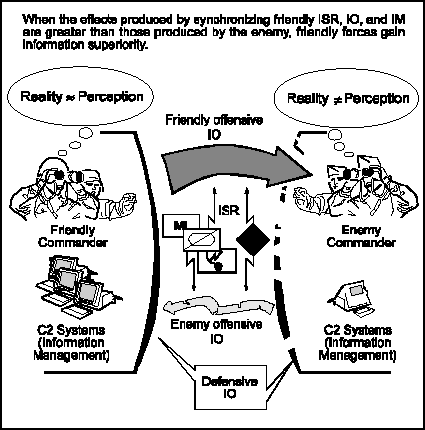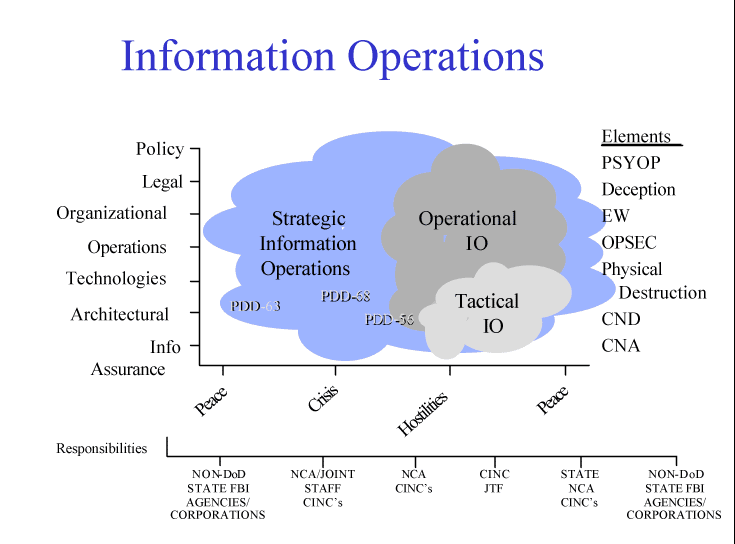New! Vandergriff’s Adaptive Thinking Blog & Cameron’s Cognitive Mapping Blog
Sunday, March 23rd, 2008Military education reformer and author Don Vandergriff has joined the blogosphere and he is off to a nice start:
First of all, my hat’s off to anyone that ventures out and participates in something like the adaptability conference. It takes moral courage to admit, “maybe I can get better, let’s see what happens here.” More compliments to the person’s organization if the organization was willing to support and encourage its people to get better. Too many organizations focus on the short term profit and simply don’t want to lose control of its people, don’t take the opportunity to make a long term investment in making its people more competent and confident. These attributes are the hallmark of adaptability.
I use a series of different games and scenario based education to involve the students (or participants) in the discussion about how to evolve adaptability in themselves and in their organization. The students end up doing the talking and usually solving or finding the answers to their questions. Each and every time any group does these exercises, they assume that I, as the facilitator, limit what they can do, like asking question to broaden their assumptions and courses of actions, and that I will always say no if they do ask a question, like “can we have more time.”
I will leave you with this thought, after doing this approach with games and getting similar results from audiences the past 50 times, why do students box themselves in? What does that tell us about ourselves and our organizations, when we always assume the negative? How does this limit our “evolutionary adaptability”?
Facilitation is the skill that separates the great teacher, who leaves an intellectual legacy in the form of students whose worldviews they have been profoundly impacted, from the scholar who is merely competent in the classroom. The latter knows their field while the former knows how to elicit students to think about the field in a deep and meaningful way.
Not all “star” scholars are great facilitators because that skill requires a good deal of self-restraint to guide students to the point where they can make the leap to discovery and comprehension on their own ( genuine learning, in other words). A high tolerance for failure and error is required because students will initially go down well-trod blind alleys ( well trod to the instructor, not to the students – this is a perspective that academics frequently overlook) before realizing that they need to generate alternative solutions. Facilitation, unlike pontification, keeps students cognitively active and on-task with timely re-direction or adaptively ( modeling for the students) takes advantage of a student insight to create a learning moment for the larger group.
I look forward to reading more in this vein from Major Vandergriff in the future ( Hat tip to DNI )
Charles Cameron, who already blogs in his area of professional expertise at Forensic Theology, has added Hipbone Out Loud to his arsenal:
Understanding is modeling, mapping.
In this blog, I want to capture the glimpses I have of an extraordinary world, each glimpse being a tiny area of a vast map – certainly more sophisticated than any individual can generate with data visualization tools and modeling software, perhaps more complicated than a single culture can grasp as a collective – but important, as it is the matrix in which our individual and cultural life-maps fall.
You will find I favor quotes and anecdotes as nodes in my personal style of mapping – which lacks the benefits of quantitative modeling, the precision with which feedback loops can be tracked, but more than compensates in my view, since it includes emotion, human identification, tone of voice.
The grand map I envision skitters across the so-styled “Cartesian divide” between mind and brain. It is not and cannot be limited to the “external” world, it is not and cannot be limited to the quantifiable, it locates powerful tugs on behavior within imagination and powerful tugs on vision within hard, solid fact.
Doubts in the mind and runs on the market may correlate closely across the divide, and we ignore the impacts of hope, fear, anger and insight at our peril.
I’ve featured the writing of Charles Cameron here before because he produces posts rich in both complexity and depth, generating intriguing horizontal-thinking patterns that would have easily escaped my attention. This another blog that I’ll be checking frequently.
 some and intimidating to others. New Media collapses traditional concepts of time and space as information moves around the world in an instant. Unlike traditional media,
some and intimidating to others. New Media collapses traditional concepts of time and space as information moves around the world in an instant. Unlike traditional media,  public diplomat, and persuader. Our adversaries understand and exploit this reality. Writing to
public diplomat, and persuader. Our adversaries understand and exploit this reality. Writing to  successes in the short run but having the global audience grdugingly concede that “the Americans speak the truth” adds momentum of every word, every idea and every action we undertake. It will not bring us love because oftentimes, our pursuing national interests will come at the expense of others but truth-telling will yield something more valuable, respect. No one cares to be treated as if they were a fool and most of the transparently self-serving gibberish official spokesmen offer up pays dividends only in contempt being added to the anger foreigners already feel at some of our policies. Credibility is to the war of ideas what COIN is to guerilla warfare and it is a valuable and exceedingly rare quality because once your credibility is lost, it is lost.
successes in the short run but having the global audience grdugingly concede that “the Americans speak the truth” adds momentum of every word, every idea and every action we undertake. It will not bring us love because oftentimes, our pursuing national interests will come at the expense of others but truth-telling will yield something more valuable, respect. No one cares to be treated as if they were a fool and most of the transparently self-serving gibberish official spokesmen offer up pays dividends only in contempt being added to the anger foreigners already feel at some of our policies. Credibility is to the war of ideas what COIN is to guerilla warfare and it is a valuable and exceedingly rare quality because once your credibility is lost, it is lost. programs, plausibly deniable third parties and used sparingly and with subtlety. The increasingly “radically transparent” world ensures that too many sophisticated eyes with all sorts of agendas will be analyzing our official spokesmen 24/7. The best will can hope to accomplish is effectively framing our public message to be truthful and compelling. Any meme that is verifiably false, if we believe we must put it out into the global media environment, cannot have a return address.
programs, plausibly deniable third parties and used sparingly and with subtlety. The increasingly “radically transparent” world ensures that too many sophisticated eyes with all sorts of agendas will be analyzing our official spokesmen 24/7. The best will can hope to accomplish is effectively framing our public message to be truthful and compelling. Any meme that is verifiably false, if we believe we must put it out into the global media environment, cannot have a return address. article in
article in  musical composition, this period of early mastery is often the most fruitful in terms of significant contributions of new discoveries or the kinds of innovations that
musical composition, this period of early mastery is often the most fruitful in terms of significant contributions of new discoveries or the kinds of innovations that


